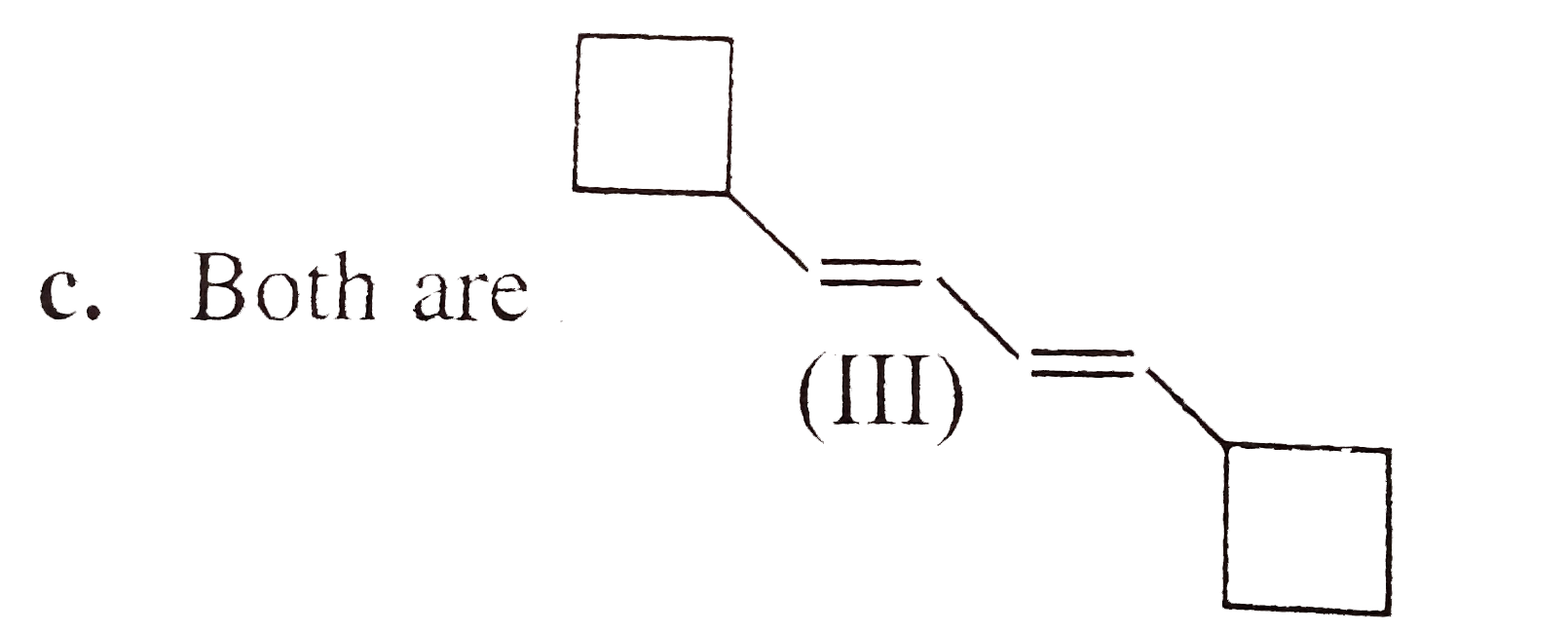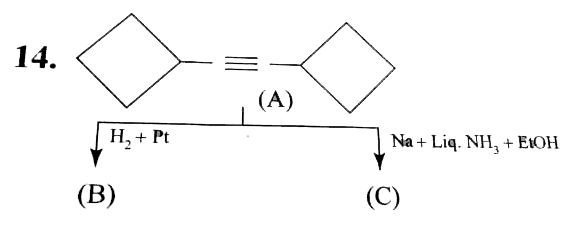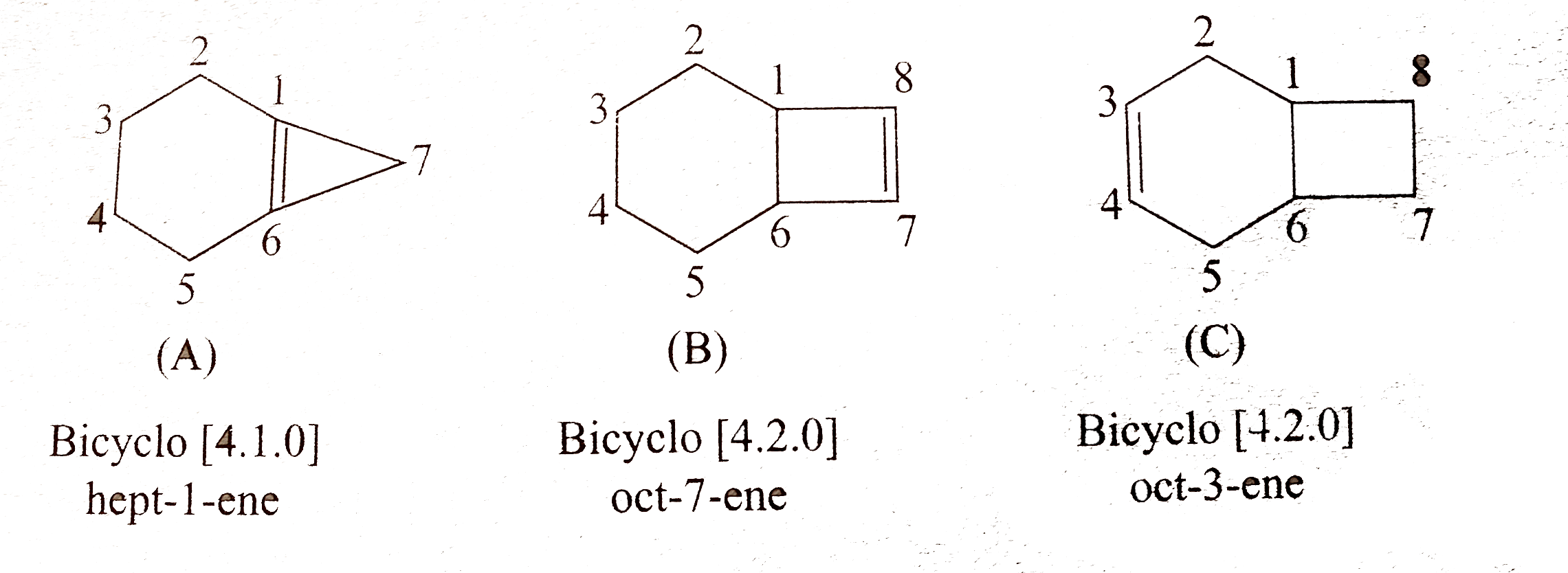
Compounds (B) and (C) are:



B is (I) and C is (II)
The correct Answer is:C
Hydrogenation of triple bond to double bond by alkali metal in the preference of liq. NH3 and ethanol by LiAlH4 takes place by anti-addition, so the product in trans, trans (III).
Topper's Solved these Questions
- BOOK - CENGAGE CHEMISTRY ENGLISHCHAPTER - ALKYNESEXERCISE - Exercises (Archives - Single Correct Answer Type)6videos
ALKYNES
- BOOK - CENGAGE CHEMISTRY ENGLISHCHAPTER - ALKYNESEXERCISE - Exercises (Archives - Fill in the Blanks Type)3videos
ALKYNES
- BOOK - CENGAGE CHEMISTRY ENGLISHCHAPTER - ALKYNESEXERCISE - Exercises (Multiple Correct Answers Type)25videos
ALKYNES
- BOOK - CENGAGE CHEMISTRY ENGLISHCHAPTER - ALKENES AND ALKADIENESEXERCISE - Single correct Answer14videos
ALKENES AND ALKADIENES
- BOOK - CENGAGE CHEMISTRY ENGLISHCHAPTER - APPENDIX - INORGANIC VOLUME 1EXERCISE - chapter-7 Single correct answer1videos
APPENDIX - INORGANIC VOLUME 1
Similar Questions

Compound (B) and (C) are :View SolutionThe reaction of H3N3B3Cl3(A) with LiBH4 in tetrahydrofuran gives inorganic benzene (B). Further, the reaction of (A) with (C) leads of H3N3B3(Me)3. Compounds (B) and (C) respectively , are :
View Solution
Compounds (B) and (C ), respectively, are:View Solution
Compounds (B) and (C) respectively are:View SolutionCompound (A) (C6H12O2) on reduction with LiAlH4 yielded two compounds (B) and (C ). The compound (B) on oxidation gave (D), which on treatment with aqueous alkail and subsequent heating furnished (E ). The latter on catalytic hydrogenation gave (C ). The compound (D) was oxidised further to give (F) which was found to be a monobasic acid (molecular formula weight =60.0). Deduce the structures of (A), (B), (C ), (D), and (E ).
View Solution
The compound (B) and (C ), respectively, are:View Solution(a). An ore (A) on roasting with sodium carbonate and lime in the presence of air gives two compounds (B) and (C).
(b). The solution of (B) in conc. HCl on treatment with potassiu ferroyanide gives a blue colour or precipitate of compound (D).View SolutionThree compounds (A),(B) and (C) are given.

Which statements are correct about (A),(B), and (C) ?View SolutionA+H2O→B+HCl
B+H2O→C+HCl
Compound (A), (B) and (C) will be respectively:View SolutionA+H2O→B+HCl
B+H2O→C+HCl
Compound (A), (B) and (C) will be respectively:View Solution

